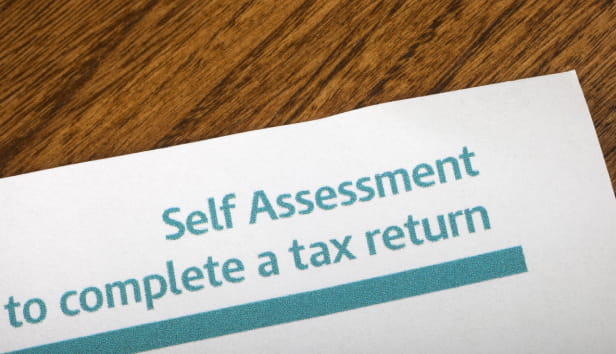
This article is for general guidance only and is not financial or professional advice. Any links are for your own information, and do not constitute any form of recommendation by Saga. You should not solely rely on this information to make any decisions, and consider seeking independent professional advice. All figures and information in this article are correct at the time of publishing, but laws, entitlements, tax treatments and allowances may change in the future.
Savers have poured a record £103 billion into tax-efficient ISAs in just one year, new figures show. The figures also reveal that most savers prefer to keep their money in cash rather than investing.
Below, we’ll look at whether the focus on cash means that people are missing out on growth. Plus, find out how your savings match up to others.
The figures, which have just been released by HMRC and cover 2023/24, show that the revival of the cash ISA has been dramatic.
Laura Suter said: “ISAs are back in fashion – for the first time in 13 years the number of ISA accounts adults paid into has topped 15 million.” She added: “Cash is king, as the nation funnelled almost £70 billion into their cash ISAs in the 2023/24 tax year to protect it from the taxman’s clutches.”
The £69.5 billion in cash ISA savings compares to £31.07 billion in stocks and shares ISAs. There were also much smaller amounts put into lifetime ISAs and innovative finance ISAs.
This resurgence was fuelled by the Bank of England pushing interest rates up to 5.25% during that year, which was a level not seen since 2008. They have since fallen to the current level of 4%.
Sarah Coles, head of personal finance at Hargreaves Lansdown, said: “The cash ISA took centre stage for the second consecutive year – and we know it had a stunning third year too… it was rising savings rates that really turned heads.”
In total there was £872 billion sitting in ISAs at the end of the 2023/24 tax year (including subscriptions from previous years), of which £360 billion was in cash. That’s because although cash ISAs are more popular, especially recently, people who do choose investments tend to put more money into them and in many cases have benefited from higher growth over time.
Average ISA balances tend to go up as we get older. People aged between 35 to 44 have an average of £13,527 saved in ISAs, while those 65 and older hold an average £63,365, according to data from HMRC and AJ Bell.
These figures are for the 2022/23 financial year so are likely to have risen since then.
Not surprisingly, average ISA wealth also goes up according to income. Someone with one or more ISAs and income between £20,000 and £29,999 per year will on average have £31,536 in their ISAs.
The average is similar for those with income up to £49,999, but then starts to increase. People earning between £100,000 and £150,000 have nearly £60,000 in savings on average.
| Age | Amount |
|---|---|
|
Under 25 |
£7,698 |
|
25-34 |
£9,477
|
|
35-44
|
£13,527 |
|
45-54 |
£25,362 |
|
55-64 |
£40,945 |
|
65 and over |
£63,365 |
A key driver for the ISA boom has been the growing number of people facing tax bills on their savings interest. Any money held within an ISA is shielded from tax on the interest, making it a useful tool for protecting your wealth.
The personal savings allowance (PSA) lets you earn a certain amount of interest tax-free each year, outside of ISAs, but this allowance has been frozen at £1,000 for basic-rate taxpayers and £500 for higher-rate taxpayers since it was introduced in 2016. Additional-rate taxpayers receive no allowance at all.
With interest rates climbing, many more savers have found their returns exceeding these fixed allowances, pushing them into paying tax on their interest.
Jason Hollands, managing director of Bestinvest, said: “Higher interest rates also meant higher tax bills on savings interest for deposits outside of the tax-efficient ISA wrapper. The personal savings allowance... has withered in real terms.”
He pointed out that in April 2023, the additional rate tax threshold was reduced from £150k to £125,140. “Some 1.23 million people are now paying additional rate tax and as a result have lost the personal savings allowance. ISAs are therefore especially important for this cohort”.
While cash had by far the biggest growth, stocks and shares ISAs also saw a healthy 11% increase in subscriptions, with over £31 billion invested.
For those with a longer-term view, investing can offer the potential for greater returns. On average, investment returns tend to outperform savings rates over time. But many savers avoid them because they want to avoid the risk to their capital.
Sarah Coles said: “The long-term growth potential of investment has the potential to deliver impressive returns, long after short-term spikes in savings rates are a distant memory.”
The government has said it wants to encourage investment, which has led to fears that the cash ISA allowance will be cut. These figures don’t yet cover the 2024/25 financial year, when this rumour peaked. So the next set of figures will show even more of a rush into ISAs.

The data also reveals a gap between men and women. While more women subscribe to ISAs overall, they are more likely to choose cash, whereas men are more likely to invest than women. This contributes to men having larger ISA pots on average.
Laura Suter, director of personal finance at AJ Bell, said: “The trend of women being more likely to opt for a cash ISA has persisted, with 922,000 more women having a cash ISA than men.
It means that women make up 56% of cash ISA holders, while they represent just 42% of stocks and shares ISA holders [based on 2022/23 data].
“We know that over time investing has generated higher returns than cash, so it’s unsurprising that men have bigger ISAs overall – as they are benefiting more from investment growth and compounding over time.
It means that the average man’s ISA is worth £35,652 versus £32,533 for women – giving a gender ISA gap upwards of £3,000.
“When you compare the gender ISA gap at different ages, it highlights just how much investment returns are boosting men’s average ISA values over time.
While the difference between men and women’s ISA values is just £80 when they are under 25, it peaks at a whopping £6,040 when we reach the 55 to 64 age group.
The fact that it drops for the oldest age groups likely reflects people drawing down on their ISA pots, moving to cash to de-risk and spouses inheriting their partner’s ISAs on death.”
It’s still possible that the rules on cash ISAs could change. Your existing savings are almost certainly safe – it’s highly unlikely that any changes would affect money that is already saved in ISAs.
There is still time to take advantage of your £20,000 annual ISA allowance for 2025/26. If you are looking for a home for your cash, it pays to shop around.
Consider whether interest on your savings is likely to go above the personal savings allowance (or the starter rate for savings if you are on a low income), as that will affect if your money is better off in an ISA or another type of savings account.
You should also think about whether you need instant access to your money or you're happy to tie it up for a year or two. That will affect whether a fixed-rate account could be a good choice. Rates on these deals are still strong, but may not stay at these levels indefinitely.
After the Bank of England held the base rate at 4% last week, it’s now widely expected that interest rates won’t be cut again this year.
If you want your money to grow for the longer term, stocks and shares could be worth considering for at least some of your money.
Savings held in cash can lose value because inflation reduces their buying power over time. Whilst it’s possible for investments to lose value, overall you give your capital a better chance of keeping up as the cost of living rises, protecting its future spending power.

.jpg?la=en&h=731&w=1300&hash=2C195E1E34305A34C8FF709B57FFDCB0)

Find out whether investing fits with your personal goals, financial situation and risk appetite.

Find out how to understand your own attitude to risk before you start investing.

If you need to complete a self-assessment tax return, you'll need to submit it by 31st January. We're here to help you with what to do.